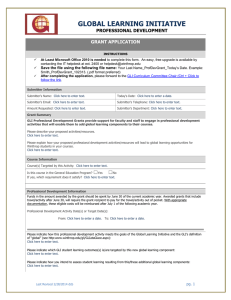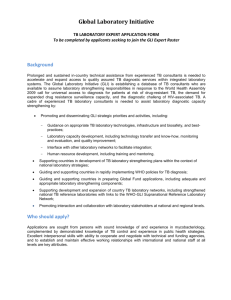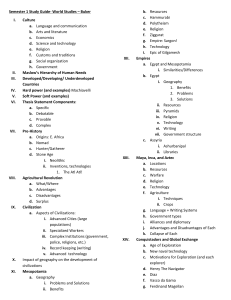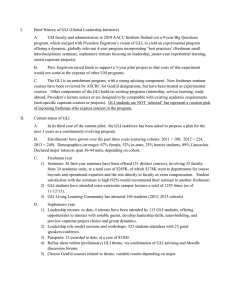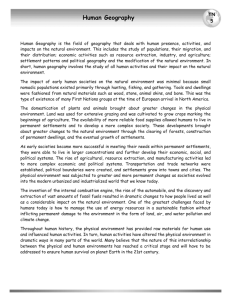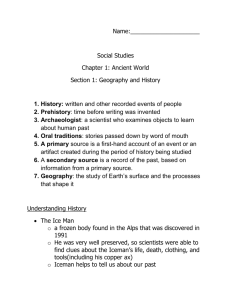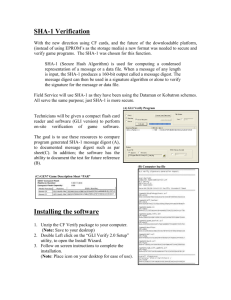Ancient Egypt Standards
advertisement
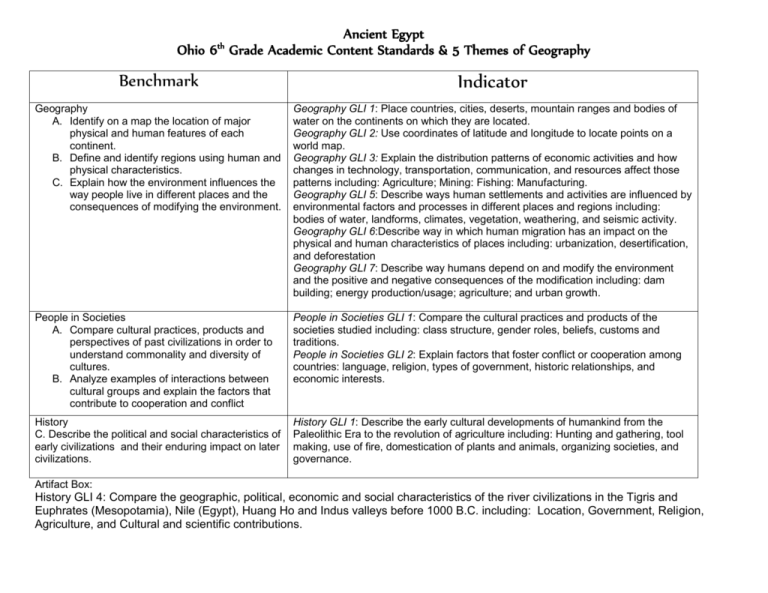
Ancient Egypt Ohio 6 Grade Academic Content Standards & 5 Themes of Geography th Benchmark Indicator Geography A. Identify on a map the location of major physical and human features of each continent. B. Define and identify regions using human and physical characteristics. C. Explain how the environment influences the way people live in different places and the consequences of modifying the environment. Geography GLI 1: Place countries, cities, deserts, mountain ranges and bodies of water on the continents on which they are located. Geography GLI 2: Use coordinates of latitude and longitude to locate points on a world map. Geography GLI 3: Explain the distribution patterns of economic activities and how changes in technology, transportation, communication, and resources affect those patterns including: Agriculture; Mining: Fishing: Manufacturing. Geography GLI 5: Describe ways human settlements and activities are influenced by environmental factors and processes in different places and regions including: bodies of water, landforms, climates, vegetation, weathering, and seismic activity. Geography GLI 6:Describe way in which human migration has an impact on the physical and human characteristics of places including: urbanization, desertification, and deforestation Geography GLI 7: Describe way humans depend on and modify the environment and the positive and negative consequences of the modification including: dam building; energy production/usage; agriculture; and urban growth. People in Societies A. Compare cultural practices, products and perspectives of past civilizations in order to understand commonality and diversity of cultures. B. Analyze examples of interactions between cultural groups and explain the factors that contribute to cooperation and conflict People in Societies GLI 1: Compare the cultural practices and products of the societies studied including: class structure, gender roles, beliefs, customs and traditions. People in Societies GLI 2: Explain factors that foster conflict or cooperation among countries: language, religion, types of government, historic relationships, and economic interests. History C. Describe the political and social characteristics of early civilizations and their enduring impact on later civilizations. History GLI 1: Describe the early cultural developments of humankind from the Paleolithic Era to the revolution of agriculture including: Hunting and gathering, tool making, use of fire, domestication of plants and animals, organizing societies, and governance. Artifact Box: History GLI 4: Compare the geographic, political, economic and social characteristics of the river civilizations in the Tigris and Euphrates (Mesopotamia), Nile (Egypt), Huang Ho and Indus valleys before 1000 B.C. including: Location, Government, Religion, Agriculture, and Cultural and scientific contributions.
